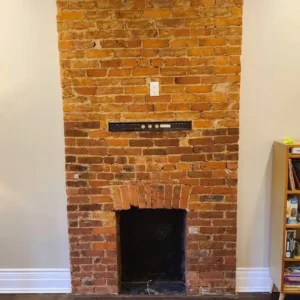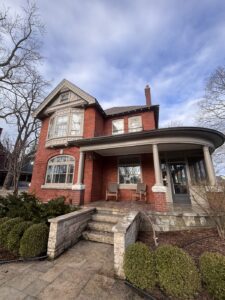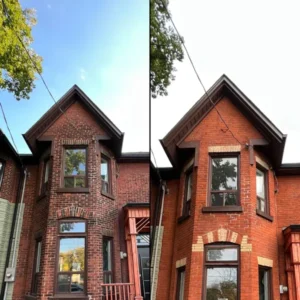Aesthetic Choice or Architectural Threat?
To the untrained eye, painting a brick home may seem like a harmless design decision—a simple refresh or a quick way to modernize a façade. But when it comes to century-old masonry, that layer of paint can do more harm than good.
At Brick Wash, we’ve seen firsthand how painted brick traps moisture, accelerates deterioration, and leads to expensive restoration projects. If your home has historic brickwork, understanding the risks of painting—and how to reverse the damage—is critical to preserving its character and value.
Why Painting Brick is Dangerous—Especially on Century Homes
Unlike modern materials, historic brick is designed to “breathe.” These bricks are highly porous, allowing moisture to move in and out naturally. This breathability helps regulate internal humidity and prevents long-term structural damage.
But when a brick is painted, that natural process gets sealed off.
Trapped moisture within the walls leads to serious issues like:
- Spalling– The brick face pops off as moisture freezes and expands inside
- Freeze-thaw damage– Common in Canadian winters, this cycle deteriorates the masonry with each season
- Mold and mildew– Trapped moisture creates an ideal environment for microbial growth within the wall cavity
Paint may offer a temporary visual improvement, but it’s a short-term fix with long-term consequences. It doesn’t preserve—it suffocates.
Signs That Paint Is Harming Your Brickwork
If your historic home has painted brick, here are some red flags to watch for:
- Blistering or bubbling paint– A sign that moisture is pushing outward
- White, powdery residue (efflorescence)– Indicates water moving through the wall, carrying salts to the surface
- Crumbling mortar joints– Suggests internal moisture damage, breaking down the structural bonds
- Hairline cracks or spalling– Often begin around painted areas and worsen over time
- Interior moisture problems– Musty smells or visible mold could point to trapped exterior moisture
These are more than cosmetic concerns—they’re early warnings of deeper structural damage.
The Right Way to Remove Paint from Historic Brick
Not all paint removal methods are created equal. DIY solutions can lead to irreversible harm. Pressure washing, harsh chemicals, or abrasive tools like wire brushes may strip away the protective outer surface of historic bricks, leaving them vulnerable to weather and erosion.
At Brickwash, we specialize in restoring historic masonry the right way:
- Eco-safe paint removers– Formulated specifically for brick and mortar
- Low-pressure steam cleaning– Gently lifts paint without damaging the underlying surface
- Reclaim system– Reduces runoff, minimizes mess, and keeps your neighbors happy
- Section-by-section care– Ensures a controlled process that respects the brick’s natural porosity and structure
- Standards-compliant work– All restoration is carried out in accordance with Canadian historic conservation best practices
Our team doesn’t just remove paint—we restore the integrity and character of your brickwork.
Case Study Snapshot
Before and After: A Victorian Gem in Toronto
The challenge:A 19th-century home had been painted in 2019 to match modern trends. Decades later, bubbling paint and internal mildew were showing up inside. The homeowners feared permanent damage.
Our solution:Brick Wash conducted a full paint removal using our gentle, masonry-safe methods. We restored the brick’s original red tone and preserved the unique tooling marks that told its story.
The result:No more moisture issues—and a stunning, authentic exterior that honors the home’s architectural legacy.
Should You Ever Paint Historic Brick?
There are rare cases where painting may be acceptable, such as:
- Already painted surfacesthat cannot be safely stripped without damaging the brick
- Interior brick walls, where moisture exposure is minimal, and breathable finishes like limewashcan be used
For those seeking a color change without harmful coatings, brick tinting(a breathable, mineral-based alternative) can sometimes be an option.
Best alternative:Limewashprovides a breathable, traditional aesthetic that allows brick to continue regulating moisture naturally.
Uncover the Beauty—Don’t Bury It
Paint may conceal imperfections, but it also covers up the warmth, craftsmanship, and resilience of historic brickwork. Worse, it can set the stage for structural decay that’s expensive—and sometimes impossible—to fully reverse.
Preserving your home’s heritage begins with letting it breathe.
Ready to let your brick breathe again?
Contact Brick Washtoday for a professional assessment and paint removal plan. Restore your home’s historic charm—safely, sustainably, and beautifully.



